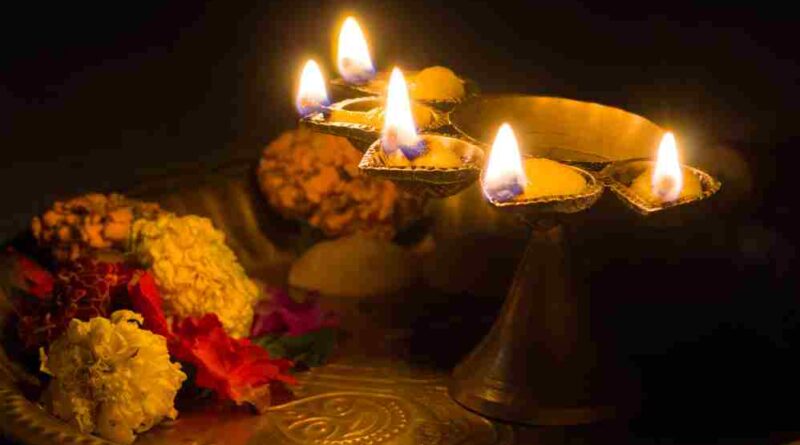Jitiya Vrat 2025: Date, Paran Time, Rituals, Rules, and Significance
Jitiya Vrat, also known as Jivitputrika Vrat, is one of the most sacred fasts observed by mothers for the long life, health, and prosperity of their children. Deeply rooted in tradition and devotion, this fast represents a mother’s unconditional love and her willingness to sacrifice even food and water for the well-being of her child.
In 2025, Jitiya Vrat will be observed with immense faith and enthusiasm across several regions of India, especially in Bihar, Uttar Pradesh, Jharkhand, and Nepal. Let’s take a detailed look at the date, paran (fast-breaking) time, rituals, food rules, and overall significance.
Jitiya Vrat 2025 Date and Timing
- Date of Vrat: Sunday, 14 September 2025
- Beginning of Ashtami Tithi: 5:04 AM on September 14, 2025
- End of Ashtami Tithi: 3:06 AM on September 15, 2025
- Paran (breaking of fast): The fast is broken immediately after the Ashtami tithi ends, traditionally in the morning following the vrat day.
This strict fasting period lasts for 24 hours, during which women observe complete abstinence from food and water.
The Three-Day Ritual Structure of Jitiya Vrat
The beauty of Jitiya Vrat lies in its structured observance that spans three important days:
1. Nahay-Khay (Day of Purification)
On the day before the main fast, mothers take a ritual bath early in the morning and consume a sattvic (pure) meal. This meal marks the last intake of food before beginning the rigorous nirjala vrat (fast without water). It is considered the foundation of purity for the coming day.
2. Main Fasting Day (Ashtami)
The actual fast is observed on the Ashtami of Krishna Paksha in the month of Ashwin. On this day, mothers completely abstain from food and even water. They dedicate the day to worship, storytelling, and listening to the sacred Jitiya Vrat Katha, which narrates tales of faith, sacrifice, and divine blessings. Throughout the day, prayers are offered for the health, longevity, and prosperity of their children.
3. Paran (Breaking the Fast)
Once Ashtami ends and Navami begins, mothers break their fast with ritualistic offerings and sattvic food. Paran usually happens in the morning hours. The breaking of the fast is not just physical nourishment but also a symbolic renewal of strength and blessings for the children.
Rules and Restrictions During Jitiya Vrat
✅ What Should Be Done
- Mothers must observe the fast with complete devotion and follow nirjala fasting (without food or water).
- Ritual bathing and purification are mandatory on the day before the vrat.
- Listening to or reading the Jitiya Vrat Katha is essential to complete the observance.
- Maintaining positivity, calmness, and a devotional mindset throughout the day is considered highly auspicious.
- Children are blessed during the prayers, symbolizing the essence of the vrat.
❌ What Should Be Avoided
- Consumption of meat, fish, eggs, onion, garlic, or alcohol is strictly prohibited.
- Negative emotions like anger, arguments, or disrespect should be avoided, as the vrat emphasizes mental purity.
- One must not break the fast before the paran time, as it is considered inauspicious.
- Overexertion should be avoided to preserve energy during the strict fasting hours.
Rituals and Offerings
- Mothers prepare a clean worship space and place idols or images of Lord Vishnu, Sun God, or regional deities associated with Jitiya.
- Offerings generally include flowers, fruits, betel leaves, turmeric, rice, and incense.
- A diya (lamp) is lit throughout the vrat as a symbol of divine presence.
- The Jivitputrika Katha is recited or heard, narrating stories of women who performed this vrat and received blessings for their children.
- During paran, foods such as rice, dal, vegetables, fruits, and sweets are prepared. The meal is strictly sattvic and cooked with purity.
Spiritual and Cultural Significance
The Jitiya Vrat is not just a religious practice — it is a cultural celebration of motherhood, sacrifice, and devotion. It reflects how deeply mothers are connected to their children’s well-being, placing their comfort and survival above their own needs.
This vrat is also a reminder of discipline and self-control, symbolizing the strength of women who endure hunger and thirst with unshaken faith. Communities come together during this festival, and the shared devotion strengthens family and social bonds.
Conclusion
In 2025, Jitiya Vrat falls on 14 September, with paran scheduled after the end of Ashtami tithi on 15 September morning. For mothers, this vrat is more than a fast — it is an emotional journey of love, sacrifice, and prayers for their children’s future.
By observing Jitiya Vrat with faith, following its rules, and performing its rituals with a pure heart, women not only seek divine blessings but also reaffirm the timeless bond between a mother and her child.
Disclaimer
The information and content shared on digitalgithub.com — including articles, blogs, news, guides, and other resources — is intended for general informational and educational purposes only. We do not guarantee the completeness, reliability, or suitability of any information. Always seek the guidance of a qualified professional before making decisions based on the information you read. Use this site at your own risk.

